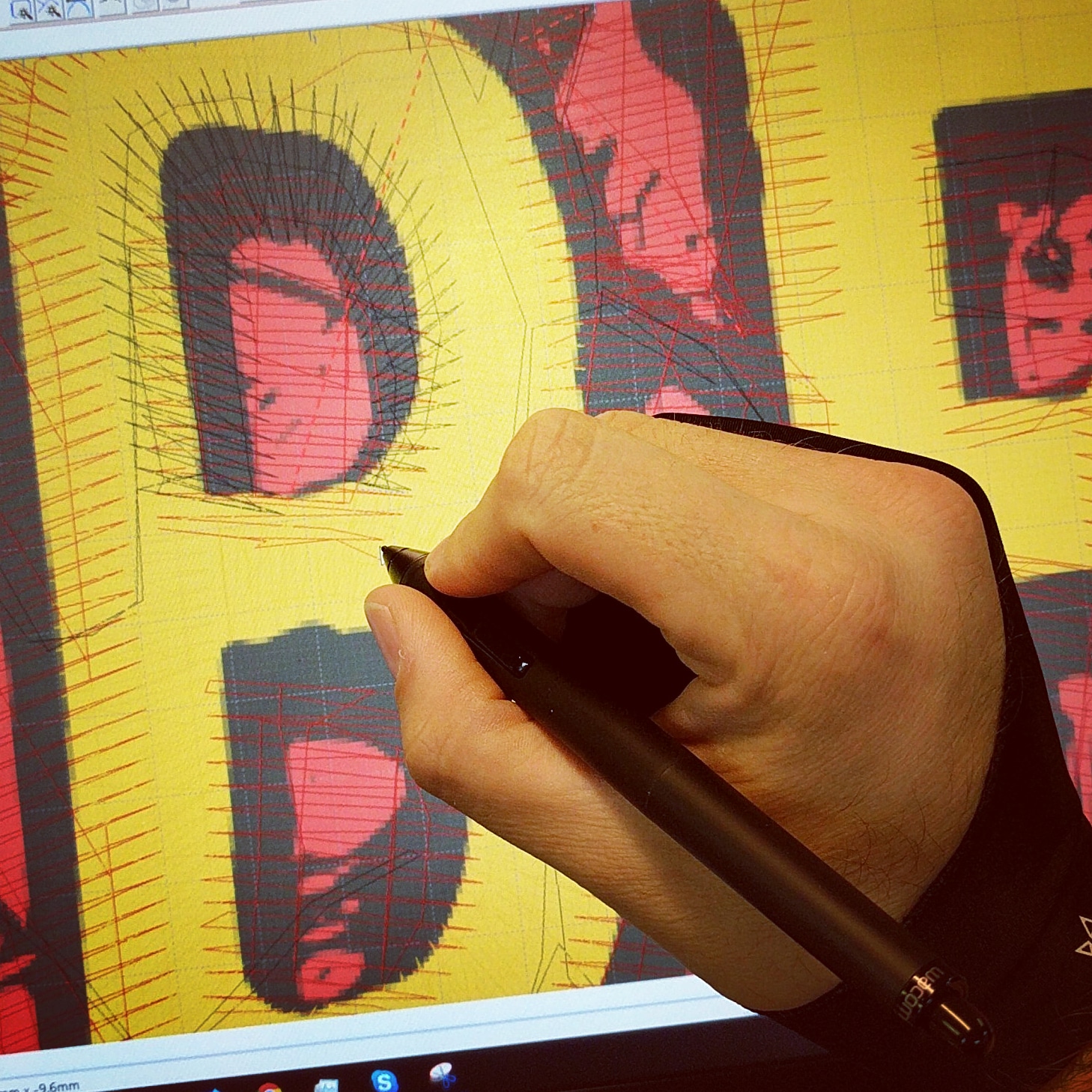Customized Digitizing for Embroidery: Tailored to Your Needs
Grasping the Needlework Digitizing Process: Your Ultimate Overview
Embroidery digitizing is a meticulous craft that requires precision and expertise to translate complex styles into digital layouts for maker embroidery. As craftsmens start this trip to master the needlework digitizing process, a detailed understanding of the essentials establishes the structure for quality. However, past the fundamental understanding lies a world of advanced software application, specialized tools, and nuanced techniques waiting to be checked out. By delving into the nuances of digitizing, one can open a world of innovative opportunities and raise their embroidery jobs to new elevations.

Understanding Needlework Digitizing Fundamentals
Embroidery digitizing fundamentals form the foundation whereupon elaborate styles are equated into machine-readable formats for accurate stitching. This first step in the needlework digitizing procedure is vital for making certain that the final embroidered product is a faithful representation of the original design. Understanding needlework digitizing fundamentals entails understanding essential principles such as stitch kinds, stitch direction, density, padding, and draw settlement.
Sew types play an important function in identifying the aesthetic and textural outcome of the embroidered style. By choosing the appropriate stitch kind, whether it be satin, fill, or running stitch, digitizers can attain the preferred impact and enhance the total quality of the needlework. Furthermore, stitch direction influences the flow and dimension of the design, while thickness identifies the spacing and protection of the stitches.
Additionally, rug stitching offers security to the style by securing the material and protecting against distortion throughout the needlework procedure. Draw compensation is one more crucial consideration to combat the natural propensity of material to contract when stitched. Understanding these embroidery digitizing basics is essential for creating professional-quality embroidered products.
Selecting the Right Digitizing Software
Selecting the proper digitizing software is a vital decision that dramatically impacts the effectiveness and quality of the needlework digitizing process. Digitizing for Embroidery. When selecting the right digitizing software, it is vital to think about variables such as the intricacy of designs you intend to produce, the user-friendliness of the software, the level of consumer assistance offered, and the compatibility with your embroidery device
There are numerous digitizing software application alternatives offered on the market, varying from basic programs for beginners to sophisticated software for specialist digitizers. Some prominent options consist of Wilcom EmbroideryStudio, Hatch Needlework Software, and PulseID. These software supply a large range of devices and functions to assist you create detailed layouts with ease.
Before choosing, it is suggested to explore the different software program alternatives via cost-free trials or demonstrations to identify which one ideal suits your requirements. In addition, reviewing testimonials and seeking suggestions from seasoned digitizers can provide valuable understandings right into the toughness and weak points of each software (Digitizing for Embroidery). By thoroughly reviewing your needs and contrasting the functions of different digitizing software application, you can make an enlightened choice that enhances your needlework digitizing operations
Digitizing Devices and Methods

Optimizing Style Setup for Needlework
Understanding the complexities of style setups is fundamental in attaining ideal cause the embroidery digitizing process, structure upon the structure laid by understanding digitizing devices and techniques. When optimizing design settings for needlework, it is necessary to think about elements such as stitch kind, thickness, padding, draw compensation, and registration. i was reading this Sew type selection affects the total feel and look of the style, with choices like satin, fill, and running stitches supplying different structures and effects. Thickness describes the spacing and density of stitches, affecting the style's insurance coverage and durability. Correct underlay stitching offers stability and protects against textile distortion, especially for complex designs or on stretchy materials. Pull payment adjusts for textile stretch during stitching, ensuring exact design duplication. Registration setups line up various aspects of the layout properly, preserving total design integrity. By fine-tuning these style setups, embroiderers can improve the high quality and accuracy of their stitched productions.

Troubleshooting Common Digitizing Issues
When running into usual digitizing problems throughout the needlework procedure, it is vital to recognize the root creates and execute reliable remedies promptly. One typical issue is stitch thickness concerns, where view publisher site stitches might be as well dense, causing the textile to tighten, or too thin, causing spaces in the layout. Changing the stitch density settings in the digitizing software application can help fix this issue.
Another frequent difficulty is thread breaks throughout the embroidery procedure. This can happen due to different factors such as wrong tension settings, plain needles, or utilizing low-grade string. Guaranteeing appropriate upkeep of the embroidery machine, including normal needle changes and stress changes, can decrease the event of string breaks.
Moreover, layout registration mistakes can result in misaligned aspects within the needlework layout. Inspecting the design positioning in the digitizing software application and making needed adjustments before stitching can aid in avoiding this concern. By resolving these common digitizing problems promptly and effectively, you can ensure a smoother needlework process and premium finished items.
Final Thought
To conclude, understanding the needlework digitizing procedure requires a strong understanding of the basics, the ideal option of software program, and understanding of devices and strategies. Optimizing style setups and repairing common digitizing problems are critical actions in making certain top notch needlework results. By following these actions faithfully, one can achieve accuracy and effectiveness in the digitizing process.